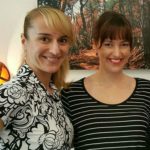Chiropractic works!
Chiropractor Care works! Or else we simply wouldn’t be around or sustainable. Chiropractic is an EVIDENCE-based intervention for spinal care. We are regulated through APRHA and adhere to the code of conduct. AHPRA (Australian Health Practitioner Regulation Agency) are responsible for implementing national registration and ensuring continuing accreditation for Chiropractors. They also regulate Pharmacology, Medicine, Psychology, Physiotherapy, Dentistry, Nursing and Midwifery. Chiropractors study at least 5 years for a Masters degree in Chiropractic.
Chiropractic is safe!
Let’s put things into perspective. In 2010 Chiropractors received 41 complaints. There is also some fear surrounding risk of stroke with chiropractor adjustment. Chiropractic and incidence of stroke in the range of 1 or 2 in 1 million to 1 in 5 million.
If Chiropractors see 215,000 consultations within Australia in a week it just shows…well it must work and it must be safe. Cassidy Et al (1) looked at any differences between a stroke following a chiropractic visit and a G.P. visit. There wasn’t any greater risk leaving the Chiropractic clinic.
So why all the “bad press” especially around Paediatric Chiropractic. If Doyle (2011) (2) found no serious adverse reaction to chiropractic published in peer reviewed literature between 1992 and 2010 and no deaths were associated with Chiropractic Paediatric care…so why all this fear?
Ultimately it’s our unique individualism which gives rise to our own belief systems…thank goodness. And thank goodness for our ability to voice our opinions either through television, print or internet.
We are inviting you to write your comments below on this very emotive issue. What experiences have you had?
1. Cassidy JD, Boyle E, Lote P, HeY, Hogg-Johnson S, Silver FL, Bundy SJ. Risk of vertebrobasiliar stroke and Chiropracitc Care, Eur Spine J. 2008: 17(1):17E183
2. Doyle MF. Is Chiropractic Paediatric Care Safe: A Best Evidence Topic. Clinical Chiropractic 2011 (Sept):14(3):97-105
